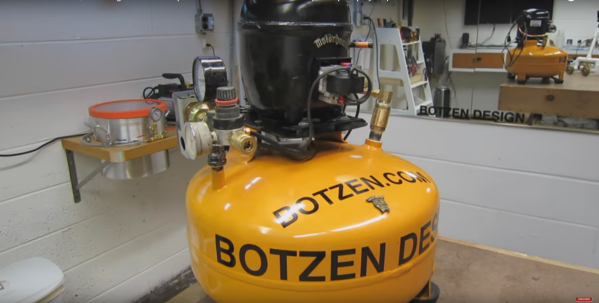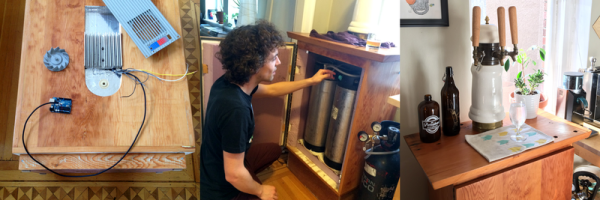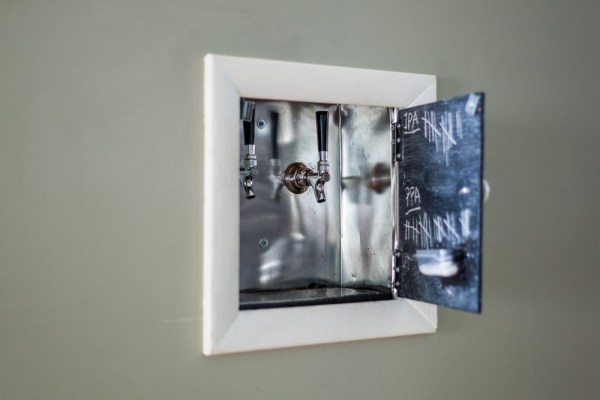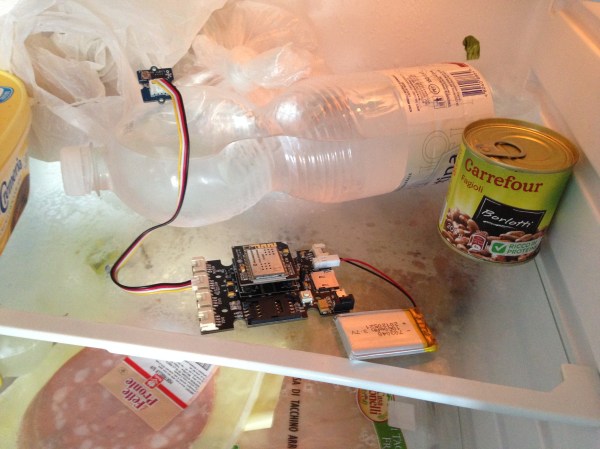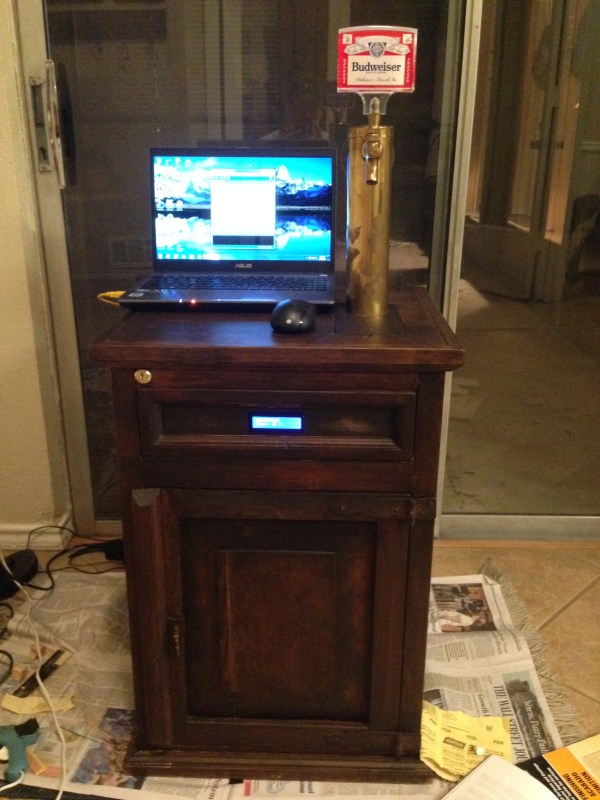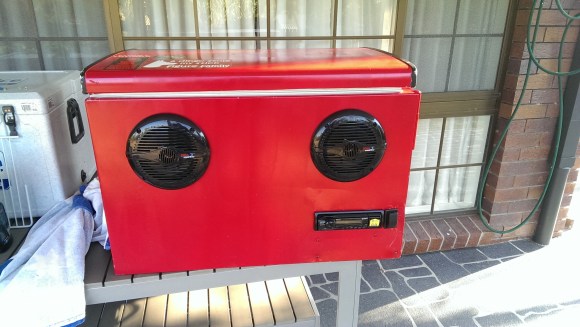Compressed air is great to have around the shop. The trouble is, most affordable compressors are somewhere between “wake the dead” and “the reason Pete Townshend is deaf” on the decibel scale. But with a little ingenuity and a willingness to compromise on performance, you might find this ultra-quiet, ultra-cheap air compressor a welcome way to keep the peace in your shop.
Yes, this compressor under-performs even a Harbor Freight pancake compressor which can be had for $60 and is ready to work right out of the box. In fact, [Eric Strebel]’s design sort of requires you to buy an air tank, and the easiest way to do that might be just to buy the compressor in the first place. But the off the shelf unit won’t run as quietly as this one does, what with a refrigerator compressor swapped in for the original motor and pump. There’s also a silencer on the input side, fashioned from a shaving cream can and some metal wool. The video below shows the build, and the results are impressive, at least from a noise perspective. Whether it suits your shop depends on your application – it certainly won’t run an impact wrench, but it’ll blow chips off your mill or dust out of your computer.
Fridge compressors are a natural starting point for air compressor builds, like this fire extinguisher based design, or this high-pressure tandem compressor. But if you need high flow and don’t care about the racket, try ganging four HF compressors in parallel.
Continue reading “Fridge Parts Make Air Compressor That’s Easy On The Ears”

